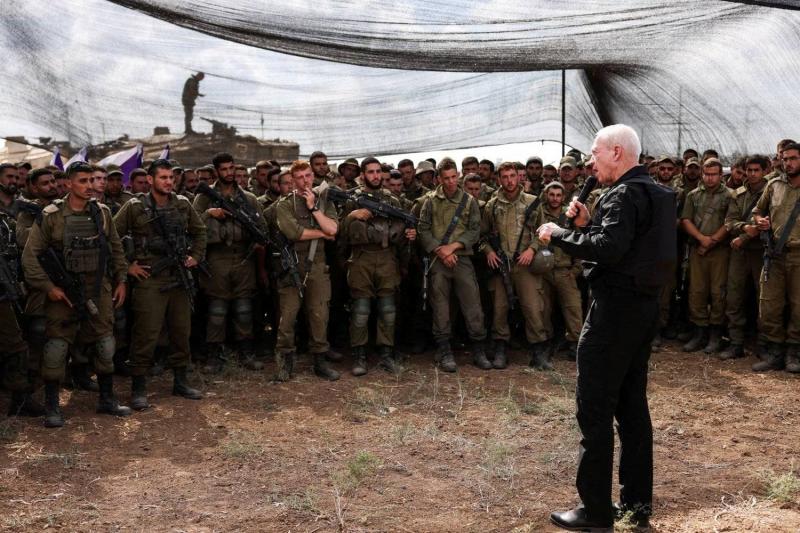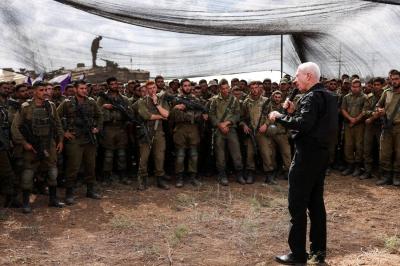Comparing the decision-making processes in the "Hamas" movement and the Israeli government based on the ongoing negotiations regarding the war in Gaza proves to be extremely difficult. The Israeli government operates within a complex system of political, strategic, and security decision-making centers. Despite the formation of a war council to lead the strategic scene, its positions and directions intersect with the "kitchen cabinet" of the government, as well as with the main government itself and its various political and partisan symbols. This emphasizes that unifying visions is quite challenging. Consequently, Israeli Prime Minister Netanyahu maneuvers, navigating intersecting circles and overlapping spaces, granting his negotiating team powers that may exceed security and strategic negotiations, even maneuvering to achieve political goals.
The voting mechanisms in the war council differ from decision-making in the government as a whole, subject to real evaluations from political and security work. The overlapping roles of intelligence agency leaders, notably the heads of the Shin Bet and Mossad on one hand, and the military intelligence "Aman" on the other, highlight the complexities of political decision-making and delays in public announcements. Other centers for decision-making also intersect, including former senior security leaders in the General Staff whose opinions on current scenarios are sought, as well as some leaders from religious institutions and settler groups that also play a role in this context. This complexity is particularly evident with the mixture of policies and numerous security and political perspectives regarding the fate of the state and its critical decisions.
In contrast, decision-making within "Hamas" is governed by stringent controls, with central decision-making concentrated in the political bureau both internally and externally. However, the centrality of the internal group, especially the figures of (Sinwar, Deif, Marwan Issa), alongside the military wing, shapes policies based on defined interests, constrained by the external partnership represented by the "Hamas" political bureau and the workgroup in Doha, against global groups and regions, particularly Lebanon. This indicates that political or strategic decision-making within "Hamas" is intertwined with the stances and approaches of influential individuals in the political scene, operating from the premise that decisions must align with a defined system.
This underscores the difficulties in the ceasefire file and the direction toward a temporary truce, despite "Hamas’s" insistence on being a significant part of the Palestinian national framework—whether it joins the Palestine Liberation Organization or not. The decision to continue managing the political or military scene is governed by various standards and transformations occurring within the institutions and apparatus of "Hamas," which confronts difficult choices and diverse stances, anchored by the movement's final decision in the short and medium term. In the end, "Hamas's" decisions emerge consensually, through disciplined criteria and strict orientations that prioritize power centers in the movement over any other metric.
It is clear that "Hamas's" decisions relate to genuine centers of influence existing within its internal institutions. Additionally, the political level of the movement abroad and regionally is influenced by certain regional parties, which possess difficult balances and guide the decision-making process within "Hamas," often attempting to shape it. This drives "Hamas" to assert itself as a "national movement" that does not accept intervention in its decision-making, which is not entirely accurate.
It can thus be confirmed that decision-making in the Israeli government and "Hamas" proceeds in the context of various considerations between domestic requirements and the interests at stake for both sides, especially under truly exceptional circumstances that perhaps concentrate on achieving their goals. The Israeli government and its Prime Minister Netanyahu navigate multiple circles to preserve the components of their coalition and avoid clashes with the current political and security reality.
Hence, there has been a demonization of the opposition, epitomized by war council member Benny Gantz despite his military history, as well as Yair Lapid and others, who represent a weak political opposition lacking real references or popular weight to firmly close the door on calls for new parliamentary elections or the formation of a comprehensive national government. This validates the current method of operation within the government while "Hamas" leaders explore a multifaceted system of higher interests, narrowing options for issuing a unified decision that intertwines various political and security priorities currently taking shape and an attempt to pivot from a military to a political approach.
The similarities persist in both cases—within the Israeli government and "Hamas"—through the centrality of what may be issued and the presence of multiple inputs within the official framework from both sides, as well as the existence of centers for influence and pressure that play a role when necessary. Their impact may be most crucial at specific times, given the presence of significant figures who drive and guide specific spaces to achieve their goals by affirming their approach in defending the security and boundaries of the state regarding Israel, while maintaining the cohesion of "Hamas" and the strength of its presence despite its significant political and strategic losses.




